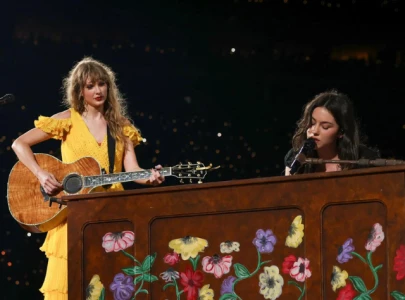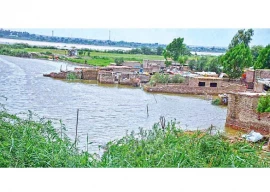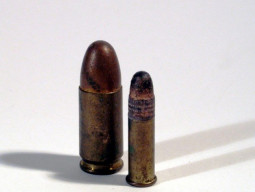
Every year thousands of women become doctors, but how much does the country benefit from them? Apparently, not much.
Research undertaken by the Sindh Health Department on five medical colleges shows that a total of 5,036 female students were enrolled in public sector colleges from the years 2005 – 2010, but only around half of them, 2,518 students, were practising doctors.
Not only does this have a high social cost, but also a very high economic cost. According to the provincial health department, an average of about Rs500,000 is spent by the government on a student every year, which sums up to Rs2.5 million for a five-year degree.
In the larger picture this means that 2,518 non-practicing medical students drain public funds worth Rs6.29 billion, giving no benefit to society in return.
But in a merit-based system, there is little that can be done about this. Women, being comparatively higher achievers, vastly surpass the number of men admitted to public sector medical colleges.
The statistics compiled by the Sindh Health Department include data from the Dow Medical College, Sindh Medical College, Liaquat University of Medical Sciences, Shaheed Benazir Bhutto University (formerly Chandka Medical College) and Ghulam Muhammad Maher Medical College, Sukkur. Information from a women’s medical institution, Peoples Medical College, Nawabshah was also included.
“This [dearth of qualified doctors] is a huge problem for us,” said a senior member of the administration at the National Institute of Child Health (NICH). “Young doctors aspiring to be paediatricians come in but leave shortly. As a result we are left in the lurch without enough staff to run the hospital’s functions smoothly.”
According to the principal of a public sector university who requested anonymity, almost 65% of female medical students do not end up practicing. Worse, nearly 20 to 25% enrol in medical colleges as their families see it as a chance for better prospects.
The issue dates back to the Supreme Court verdict on college and university seats being awarded on open merit, throwing away the earlier quota system. Some doctors and administrators, however, feel that reverting to the quota system may help resolve this problem. “Previously it was a 30 [women] to 70 [men] quota,” said a senior medical college administrator. “If nothing else, perhaps a 50-50 quota can be implemented,” he said requesting not to be named.
Another suggestion is that a hefty penalty be set for non-practising doctors, a professor at a teaching hospital said. “This will either encourage students to pursue their careers or discourage them from occupying seats which do not help society in any way. This is especially true for women.” Another solution suggested is making medical colleges only for men such as those only for women.
The pinch of not having enough women doctors in the field was first felt after the 2005 earthquake when many women refused to go to the area. A similar problem was experienced during the floods in 2010 and this year, an administrator added.
Dow Medical College
Male 63, Female 267
Sindh Medical College
Male 66, Female 264
Liaquat University Medical and health Sciences, Jamshoro (LUMHS)
Male 116, Female 222
Shaheed Benazir University (formerly Chandka Medical College)
Male 121, Female 125
Ghulam Muhammad Maher College
Male 44, Female 55
Peoples Medical College for Women, Nawabshah
Male -- , Female 193
Total
410 1,126
2005
Dow Medical College
Male 90, Female 21
Sindh Medical College
Male 59, Female 238
Liaquat University Medical and health Sciences, Jamshoro (LUMHS)
Male 23, Female 197
Shaheed Benazir University (formerly Chandka Medical College)
Male 68, Female 126
Ghulam Muhammad Maher College
Male 46, Female 44
Peoples Medical College for Women, Nawabshah
Male --, Female 167
Total
553 926
2006/7
Dow Medical College
Male 93, Female 207
Sindh Medical College
Male 64, Female 236
Liaquat University Medical and health Sciences, Jamshoro (LUMHS)
Male 225, Female 241
Shaheed Benazir University (formerly Chandka Medical College)
Male 140, Female 110
Ghulam Muhammad Maher College
Male 46, Female 44
Peoples Medical College for Women, Nawabshah
Male --, Female 192
Total
568 1,030
2007/8
Dow Medical College
Male 119, Female 208
Sindh Medical College
Male 83, Female 217
Liaquat University Medical and health Sciences, Jamshoro (LUMHS)
Male 178, Female 176
Shaheed Benazir University (formerly Chandka Medical College)
Male 135, Female 108
Ghulam Muhammad Maher College
Male 51, Female 49
Peoples Medical College for Women, Nawabshah
Male --, Female 188
Total
539 946
2008/9
Dow Medical College
Male --, Female 238
Sindh Medical College
Male 68, Female 230
Liaquat University Medical and health Sciences, Jamshoro (LUMHS)
Male 37, Female 208
Shaheed Benazir University (formerly Chandka Medical College)
Male 109, Female --
Ghulam Muhammad Maher College
Male 43, Female 57
Peoples Medical College for Women, Nawabshah
Male --, Female 173
Total
429 1,008
Published in The Express Tribune, January 2nd, 2012.

1725784957-0/Tribune-Pic-(17)1725784957-0-165x106.webp)
1724760612-0/Untitled-design-(12)1724760612-0-165x106.webp)














COMMENTS
Comments are moderated and generally will be posted if they are on-topic and not abusive.
For more information, please see our Comments FAQ